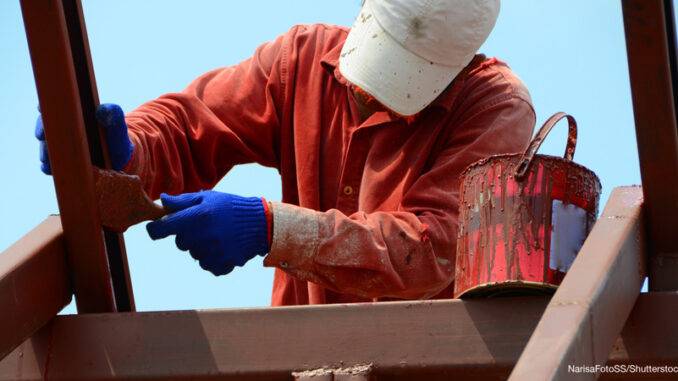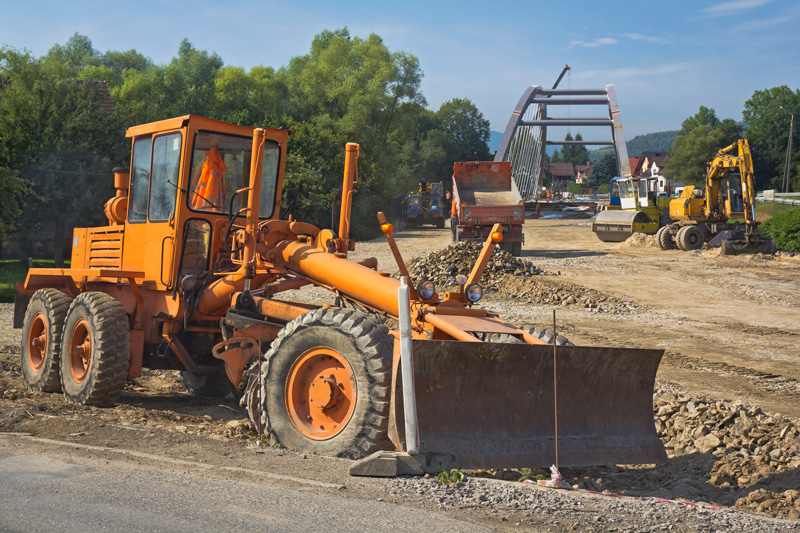
February Jobs Report Shows Steady Growth
Last Friday, the Bureau of Labor Statistics released its jobs report for February. The report shows strong economic growth. The unemployment rate fell one tenth of a percent from 4.8 to 4.7, and 235,000 new jobs were added. The average hourly earnings were also up 2.8 percent from this time last year. The report continues the strong economic growth shown in January, and may have something to do with companies’ anticipation of heavy tax cuts and infrastructure investment (see the second story below) under the Trump administration. The unseasonably warm weather contributed to growth as well, with 58,000 of the new jobs coming from construction.
Over the past three months, job growth has averaged about 200,000 new jobs per month. After February’s report, the central bank considers the nation to be at nearly full employment. That is the point at which, in theory, anyone who wants a job can find one. The overall national unemployment rate has been at or below 5 percent for the past 18 months. The stock market also continues to grow, as does consumer spending.
Though these economic gains are encouraging, however, they are not always equal. The number of Americans who have given up looking for work altogether, or who work part-time jobs when they want full-time jobs, is still at 9.2 percent, which is fairly high considering the overall strength of the economy. Also, workers in large urban areas have seen more than twice the wage growth of workers in rural, non-urban areas. And uncertainty surrounding the future of health care reform has caused medical communities to pause or slow their hiring.
After the strong February report, Federal Reserve Board Chairwoman Janet Yellen has indicated that she plans to raise the interest rate. This measure causes borrowing to be more expensive, which slows growth. This, in turn, keeps wages from rising too fast and prevents inflation. President Trump, on the other hand, has made it clear that he would like to continue stimulating growth. Any increase the Fed makes is likely to be minimal and keep the interest rate at below 1 percent.
Dig Deeper Using this article and other Internet resources, create a graphic in which you show the number of U.S. jobs gained every month over the past two years. In what month was job growth the strongest? The weakest? Based on this information, what factors do you think might influence job growth?
American Infrastructure Receives Poor Grade
The newest report card released by the American Society of Civil Engineers–the first report in four years–has rated American infrastructure a D-plus overall. Highways and roads receive a D, because they are overcrowded and dangerous. More than 2 out of every 5 miles of urban interstates are congested, and as a result, Americans waste roughly 43 hours per years stuck in traffic. Bad roads cost Americans money because of the increased wear and tear on their cars. Worse, road conditions are a factor in one third of U.S. traffic fatalities every year.

But it’s not only our roads that are in need of attention. Airports are similarly out of date and overcrowded. Leaking pipes and water main breaks cause us to lose over 2 trillion gallons of treated drinking water each year. The average age of our 90,000 dams is 56 years old, and over 2,000 of them are deficient and in danger of failing. Four out of ten highway bridges are at least 50 years old, and almost 60,000 bridges nationwide are considered structurally deficient. Airports, drinking water systems, and dams all earn a D grade, while bridges earn a C-plus. Mass transit received the worst grade of all: a D-minus.
President Trump has pledged his commitment to repairing the nation’s infrastructure by introducing a $1 trillion investment plan. However, the ASCE says that this is not nearly enough. Getting all of the nation’s infrastructure into good shape by 2025 would cost about $4.59 trillion. To this end, the ASCE has proposed a huge 25 cent per gallon gasoline tax to help raise funds. They point out that the current tax of 18.4 cents per gallon hasn’t been raised since 1993. Trump has also suggested partnering with private business to help fund larger infrastructure projects. State governments are considering measures such as expanded tolling and mileage-based user fees to combat the problem.
No matter what approach the federal government decides to take, with controversial issues like health care and tax code reform currently on the table, it is unlikely that infrastructure needs will be addressed anytime soon.
What Do You Think? Imagine that you have been given enough money to repair one of the nation’s following infrastructure problems: roads, bridges, drinking water systems, dams, or mass transit. Which of these would you choose to focus on, and why? Give good reasons to support your answer.
Listening to Temperature: Your Brain’s Secret Skill
Try this quick and easy experiment: Turn on the faucet in your kitchen or bathroom. Adjust the water so that it runs hot, then cold. Listen carefully. Can you tell the difference between the two temperatures just by their sound?
Turns out, the answer is yes–at least for some people. The reason has to do with the viscosity, or thickness, of the water. As water is heated, it loses viscosity. It is easy to see this with substances such as honey or syrup, which get much runnier when they are warmed up. Molecules in thicker, colder liquids don’t have as much energy, so they move more slowly. With water, you can’t see the difference in viscosity the way you can with honey or syrup, but you can hear it. The slowing down of molecules also causes cold water to be less bubbly. For this reason, cold water has a lower-pitched sound. Hot water makes a higher-pitched sound because its molecules are moving around more. Over time, we have heard so many hot and cold drinks being poured that our brains subconsciously learn to pick up on the differences between the two sounds.
While this may seem like just a cool trick, this experiment actually has greater significance. The way temperature changes water has an impact on everything on earth, especially global warming.
Dig Deeper Did you try the experiment described above? What were the results? Were you surprised to find out that you have this ability?
Massive Statue Found in Cairo Pit
In a dilapidated neighborhood in Cairo, Egypt, archaeologists have discovered a 3,000 year old, 26-foot quartzite statue that they believe may be of Pharaoh Ramses II. Ramses II, also known as Ozymandias or Ramses the Great, ruled Egypt from 1279 to 1213 BCE. The site where the statue was found is on top of what was once Heliopolis, one of the oldest Egyptian cities. Although the statue is not labeled, scientists believe it depicts Ramses II because it was discovered in front of the gate to his temple.
So far, the lower part of the head, the crown, the right ear, and a part of the right eye have been found. Once the excavation is complete and the statue is restored and identified, it will be placed at the entrance to Cairo’s Grand Egyptian Museum, scheduled to open in 2018. Unfortunately, the archaeologists face many challenges. The statue was found in a pit underneath three feet of groundwater, as well as industrial waste and piling rubble. The head was so heavy that a forklift was necessary to remove it. Now, archaeologists must figure out how to remove the torso, which is even larger. They suspect that the hips and legs are still hidden, but because the dig site is in the middle of a city, it may be too dangerous to excavate so close to residential buildings. Therefore, it’s possible that the complete statue may never be recovered.
The find comes at the end of a dig that began in 2012 and is a joint project between Egypt and Germany. Nearby, archaeologists have also discovered a 31-inch part of a life-size limestone statue of Ramses II’s grandson, Pharaoh Seti II. Pharaoh Ramses II enjoyed one of the longest reigns in ancient Egypt: 66 years. Under his rule, Egypt experienced great growth and prosperity, and expanded its borders east to modern-day Syria and south to modern-day Sudan. For these reasons, he was referred to by his descendants as the “Great Ancestor.”
